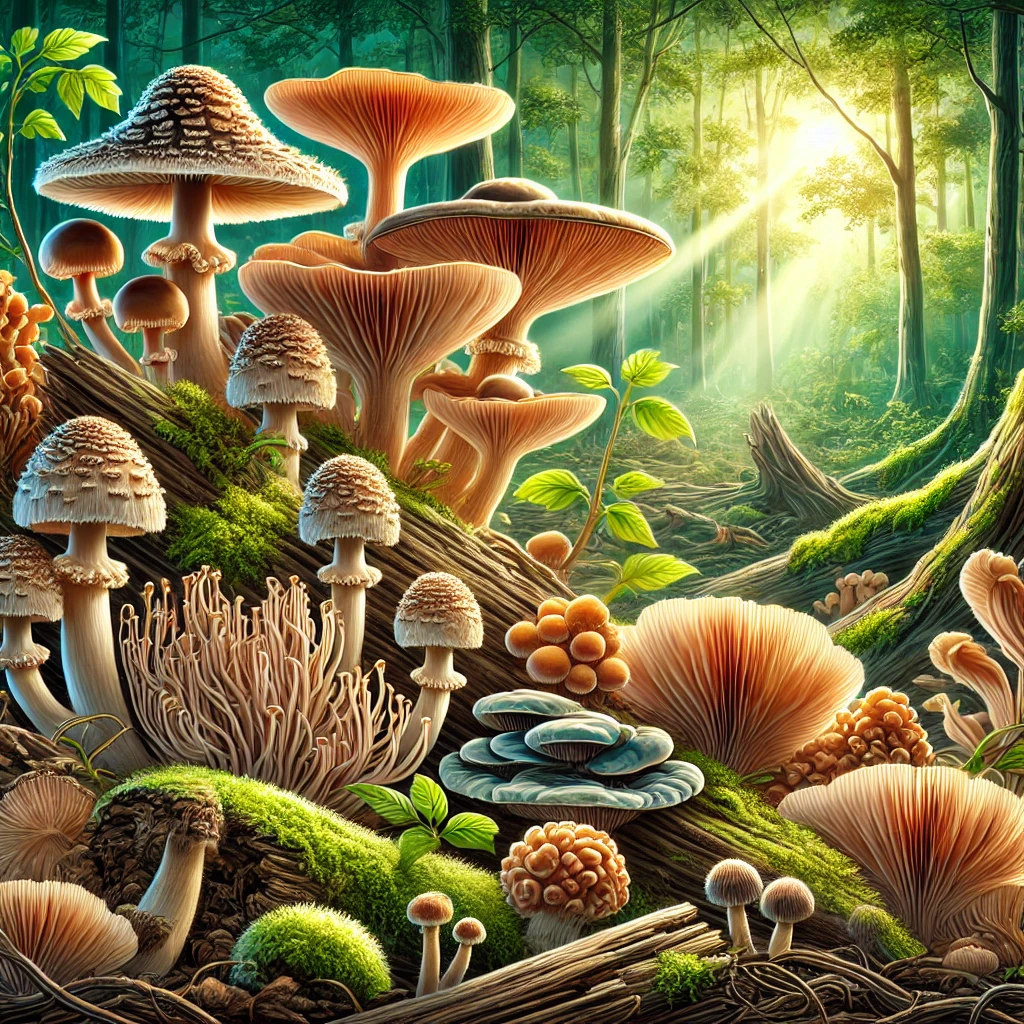Understanding Saprophytic Mushrooms
It’s probably a saprophytic mushroom if you observe one growing atop another. These mushrooms are not dangerous and may even be good for the environment. Saprophytism is the scientific term for the occurrence of mushrooms growing on mushrooms. Saprophytes are living creatures that eat rotting or dead substances. The mycelium of another mushroom serves as the dead or decaying stuff in the case of mushrooms.
Mycelium Structure and Decomposition
The vegetative portion of a fungus is called mycelium and is composed of a network of hyphae that resemble threads. The mycelium in a dead mushroom starts to deteriorate. Other fungi can develop on the decomposing mycelium thanks to the nutrients provided by this decomposition process.
Common Saprophytic Species
The common saprophytic fungus Coprinus comatus, sometimes called the shaggy mane mushroom, flourishes in gardens and lawns. The oyster mushroom, or Pleurotus ostreatus, is a saprophytic fungus that develops on wood. The shiitake mushroom, also known as Lentinula edodes, is a saprophytic fungus that develops on dead hardwood trees. The morel mushroom, or Morchella esculenta, is a saprophytic fungus that blooms in the spring.
Natural Growth and Benefits
Mushrooms that grow naturally are not parasitic. They have no negative effects on the mushroom they are growing on. They may even aid the mushroom’s decomposition and nutrient release into the soil.
Types of Saprophytes
Saprophytes are organisms that ingest dead or decomposing organic substances for nutrition. Due to their heterotrophic nature, they cannot manufacture their nourishment. All ecosystems contain saprophytes, vital to the breakdown of organic materials.
Diversity in Saprophytic Organisms
Saprophytes come in various forms, including fungi, bacteria, and protists. The most prevalent saprophyte species are fungi, which are crucial to plant or animal waste breakdown. Bacteria are essential saprophytes as well, contributing to the breakdown of organic and inorganic materials. The vast group of creatures known as protozoa includes several saprophytes.
Ecological Importance
Because they aid in the recycling of nutrients, saprophytes are vital for the ecosystem. They return nutrients to the soil or water when they break down organic debris. Then, other species, like plants and animals, can utilize these nutrients. Saprophytes also aid in the breakdown of environmental poisons and contaminants.
